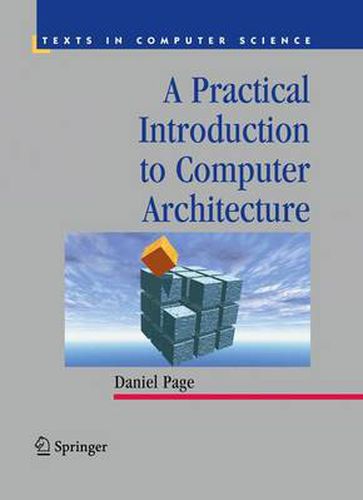Readings Newsletter
Become a Readings Member to make your shopping experience even easier.
Sign in or sign up for free!
You’re not far away from qualifying for FREE standard shipping within Australia
You’ve qualified for FREE standard shipping within Australia
The cart is loading…






This title is printed to order. This book may have been self-published. If so, we cannot guarantee the quality of the content. In the main most books will have gone through the editing process however some may not. We therefore suggest that you be aware of this before ordering this book. If in doubt check either the author or publisher’s details as we are unable to accept any returns unless they are faulty. Please contact us if you have any questions.
It is a great pleasure to write a preface to this book. In my view, the content is unique in that it blends traditional teaching approaches with the use of mathematics and a mainstream Hardware Design Language (HDL) as formalisms to describe key concepts. The book keeps the machine separate from the application by strictly following a bottom-up approach: it starts with transistors and logic gates and only introduces assembly language programs once their execution by a processor is clearly de ned. Using a HDL, Verilog in this case, rather than static circuit diagrams is a big deviation from traditional books on computer architecture. Static circuit diagrams cannot be explored in a hands-on way like the corresponding Verilog model can. In order to understand why I consider this shift so important, one must consider how computer architecture, a subject that has been studied for more than 50 years, has evolved. In the pioneering days computers were constructed by hand. An entire computer could (just about) be described by drawing a circuit diagram. Initially, such d- grams consisted mostly of analogue components before later moving toward d- ital logic gates. The advent of digital electronics led to more complex cells, such as half-adders, ip- ops, and decoders being recognised as useful building blocks.
$9.00 standard shipping within Australia
FREE standard shipping within Australia for orders over $100.00
Express & International shipping calculated at checkout
Stock availability can be subject to change without notice. We recommend calling the shop or contacting our online team to check availability of low stock items. Please see our Shopping Online page for more details.
This title is printed to order. This book may have been self-published. If so, we cannot guarantee the quality of the content. In the main most books will have gone through the editing process however some may not. We therefore suggest that you be aware of this before ordering this book. If in doubt check either the author or publisher’s details as we are unable to accept any returns unless they are faulty. Please contact us if you have any questions.
It is a great pleasure to write a preface to this book. In my view, the content is unique in that it blends traditional teaching approaches with the use of mathematics and a mainstream Hardware Design Language (HDL) as formalisms to describe key concepts. The book keeps the machine separate from the application by strictly following a bottom-up approach: it starts with transistors and logic gates and only introduces assembly language programs once their execution by a processor is clearly de ned. Using a HDL, Verilog in this case, rather than static circuit diagrams is a big deviation from traditional books on computer architecture. Static circuit diagrams cannot be explored in a hands-on way like the corresponding Verilog model can. In order to understand why I consider this shift so important, one must consider how computer architecture, a subject that has been studied for more than 50 years, has evolved. In the pioneering days computers were constructed by hand. An entire computer could (just about) be described by drawing a circuit diagram. Initially, such d- grams consisted mostly of analogue components before later moving toward d- ital logic gates. The advent of digital electronics led to more complex cells, such as half-adders, ip- ops, and decoders being recognised as useful building blocks.